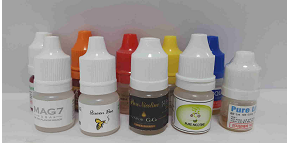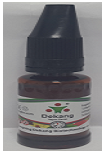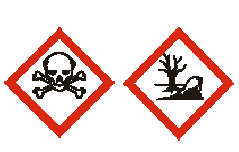KCA News & Media
Press Release
Press Release
| Concerns over misuse and abuse of e-cigarette nicotine | |||||||||||||||||||||||||||||||||||
|---|---|---|---|---|---|---|---|---|---|---|---|---|---|---|---|---|---|---|---|---|---|---|---|---|---|---|---|---|---|---|---|---|---|---|---|
| Date | 2015-06-16 | Hit | 2155 | ||||||||||||||||||||||||||||||||
|
Concerns over misuse and abuse of e-cigarette nicotine -Actual and labeled nicotine content different, danger of electric shock due to defective charger-
According to a joint survey by the Korea Consumer Agency (www.kca.go.kr) and the Korea Agency for Technology and Standards (www.kats.go.kr), there are concerns over misuse and abuse of nicotine liquid used in electronic cigarettes (e-cigarettes) due to the difference between actual and labeled content, and caution is needed as nicotine absorption level may rise if maintaining the same habit of smoking regular cigarettes. Also, certain e-cigarette chargers (direct current power supply) have been found inadequate by safety standards and will be recalled. The KCA compared the actual and labeled nicotine content of 25 nicotine liquid products* used in e-cigarettes that are currently available in the market. Quality control was found to be lagging as 10 of the products (40.0%) showed margin of error of above plus/minus 10%. * 16 “nicotine extracts” and 9 “combined nicotine liquids”
* The American E-liquid Manufacturing Standards Association (AEMSA) recommends margin of error of plus/minus 10% for nicotine content. In addition, the KCA measured the vapor-phase nicotine content in 16 diluted extracts (12mg/ml*) and 2 combined nicotine liquid products (12mg/ml), and found that 17 products (94.4%) contained higher levels of vapor-phase nicotine (1.1x ~ 2.6x higher) per stick*** compared to regular cigarettes (median concentration of 0.33mg/stick**). Therefore, if maintaining the same smoking habit, the level of nicotine absorption may likely be higher when using e-cigarettes. * 12mg/ml is the nicotine concentration level informed by stores selling e-cigarettes (similar to the median concentration level of regular cigarettes upon diluting nicotine extracts). ** Weighted average value of nicotine content per stick labeled according to the Tobacco Business Act, reflecting domestic tobacco sales in 2014. *** According to ISO standards, it takes roughly 10 puffs to smoke one cigarette. Comparison was done between 10 puffs of e-cigarette and one stick of cigarette. Vapor-phase formaldehyde or acetaldehyde, which are both carcinogens, was detected in 13 products (52.0%) but the level was relatively low compared to regular cigarettes* and substantial levels of formaldehyde were found in one product (vs. 14μg per stick of cigarette). * 9.29μg of formaldehyde contained per stick of cigarette with labeled nicotine content of 0.3mg (source: Werley et al, 2008) Nicotine liquid which contains more than 1% (10mg/ml) of nicotine is classified as a poisonous substance according to the Toxic Chemicals Control Act and can be sold by licensed parties. However, according to a survey by the KCA on nicotine liquid sales, lethal dose* of nicotine extracts (38mg/ml~685mg/ml) was being sold via e-cigarette stores. Nicotine extracts of 1,000mg/ml could even be directly purchased overseas. As can be seen, urgent measures are needed. * Nicotine lethal dose: 40~60mg (0.5~1.0mg per 1kg of adult weight) Concerns are high over nicotine misuse as e-cigarette stores provide information using a primitive method (i.e. counting the number of liquid drops in a container), without guidelines needed for diluting nicotine or measuring equipment. The 25 products surveyed failed to have all of the required labels, such as names, signal words and pictograms (according to the Toxic Chemicals Control Act) and warning levels (according to the National Health Promotion Act). Accordingly, stronger management and supervision is needed by relevant bodies. Also, 12 products (48.0%) did not label the content unit (mg/ml) and may likely be misused due to the container being similar to that of eye drops. One product (4.0%) even had a fruit design on the container surface which may attract the curious eyes of children. Furthermore, 15 products (60.0%) did not use child protective packaging which may likely lead to accidents.
Among the 63 injuries reported (2012~April 2015) to the KCA’s Consumer Injury Surveillance System (CISS), 29 cases (46.0%) were mostly reported from January ~ April 2015. Among the cases, 37 involved injuries to the body. In detail, side effects related to nicotine liquid were headaches, vomiting and dizziness (10 cases or 27.0%), followed by eye injuries (8 cases or 21.6%), and oral infections (5 cases or 12.9%). Injuries associated with e-cigarettes were burns to the face, arms and hands (8 cases or 21.6%). In order to prevent the misuse and abuse of nicotine, the KCA stressed the need for policy measures. Of note, the EU has mandated the use of child protective packaging and is to limit (from 2016) nicotine concentrations (20mg/ml) and nicotine liquid volume (10ml). The KCA explained that the survey was conducted following the issue raised by a member of the National Assembly, and advised the following based on the survey results: i) develop guidelines on nicotine concentration and labeling of nicotine liquid used in e-cigarettes; ii) propose policy recommendations (such as use of child protective packaging) to relevant bodies; iii) keep nicotine liquid out of reach of children; and iv) beware that higher levels of nicotine can be absorbed from e-cigarettes if maintaining the same habit of smoking regular cigarettes. The KATS conducted a safety survey of 32 e-cigarette batteries and chargers currently available in the market. Recall order was issued as there was risk of electric shock for 10 chargers given that the insulation distance of transformers was below the permitted level and major components were arbitrarily changed (different upon obtaining certification). * Refer to Attachment 2 for information on manufacturers (importers/sellers) and product names Business operators that received recall orders had to collect the products from stores, and offer exchanges or refunds to consumers. * How to find information on products subject to recall: ① Visit the Product Safety Information Center website → ② Click on “product recall” on the upper left → ③ Find the product on the “recall information search engine” Going forward, the KATS plans to continuously work towards preventing the distribution of defective e-cigarette chargers by strengthening the level of punishment related to defective chargers through law revisions* and performing quarterly safety surveys of products designated as primary management objects. * In order to punish those who have intentionally changed components after obtaining certification, the revised Framework Act on Product Safety passed the National Assembly on April 30 and will be implemented in May. Furthermore, the KATS recommended consumers to purchase e-cigarette chargers with the Korea Certification (KC) mark at stores specializing in e-cigarettes that are of high quality and safe. |
|||||||||||||||||||||||||||||||||||
| Next | Increasing problems related to “social dating service” | ||||||||||||||||||||||||||||||||||
| Prev | Baeksuo (medicinal root) products sold in the market mostly bogus | ||||||||||||||||||||||||||||||||||




